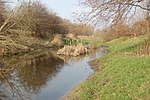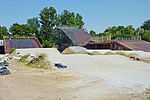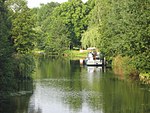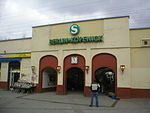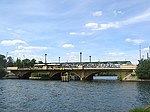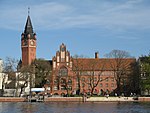Stadion An der Alten Försterei

Stadion An der Alten Försterei (English: Stadium at the old forester's house) is a football stadium in Köpenick and the largest single-purpose football stadium in the German capital of Berlin. It has been home to football club 1. FC Union Berlin and its forerunners since its opening in 1920. The stadium's capacity was last redeveloped in 2009 and expanded in 2013. Some of the redevelopment work was carried out by over 2,300 Union Berlin supporters volunteering their services. During league matches the arena features a total capacity of 22,012. There are 3,617 seats available whilst the rest of the ground remains terracing. The stadium became also known for events like the annual "Weihnachtssingen" (Christmas Carols Event) and the "WM-Wohnzimmer" (World Cup Living Room) in 2014.
Excerpt from the Wikipedia article Stadion An der Alten Försterei (License: CC BY-SA 3.0, Authors, Images).Stadion An der Alten Försterei
An der Wuhlheide, Berlin Köpenick
Geographical coordinates (GPS) Address External links Nearby Places Show on map
Geographical coordinates (GPS)
| Latitude | Longitude |
|---|---|
| N 52.457222222222 ° | E 13.568055555556 ° |
Address
Stadion An der Alten Försterei
An der Wuhlheide 263
12555 Berlin, Köpenick
Germany
Open on Google Maps
